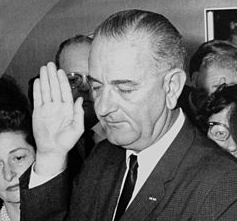I’ve been reading about the passage of the 1957 Civil Rights Bill, which, in its original form, banned racial segregation in theaters, restaurants and hotels (though by the time it was passed, almost all of the content had been stripped out). There’s a part of this history that makes no sense to me and I’m wondering if someone can explain it.
Remember first that this was at a time when several southern states enforced laws that mandated segregation in theaters, restaurants and hotels.
It was also at a time when, as I understand it, the outcome of the legislative battle was very much in doubt, so that each side feared the worst and was eager to compromise. Supporters weren’t sure they could beat a filibuster, which meant the bill might never even come to a vote. Opponents feared a filibuster might be beaten and the bill passed without amendments.
Lyndon Johnson, the majority leader of the Senate, wanted above all else to avoid a major fight, and was eager to facilitate any compromise both sides could agree on. He floated several compromise proposals and actively solicited others, from legislators, attorneys, and everyone else he could think of.
In Master of the Senate, the third in his three-volume biography of Lyndon Johnson, Robert Caro describes a vast number of compromises that failed before the passage of the final successful compromise.
Now here’s what astonishes me: Here you had all these lawyers and politicians, desperately trying to find a creative compromise — and yet, as far as I can tell, nobody ever proposed the compromise that seems (to me) to be obvious. The Republicans and northerners wanted mandatory integration. The southerners wanted to maintain mandatory segregation. The obvious compromise, I should think, would be to have neither — the northerners agree not to pass a federal law, and the southerners agree to repeal some state laws.
Continue reading ‘Blinded By Prejudice?’














